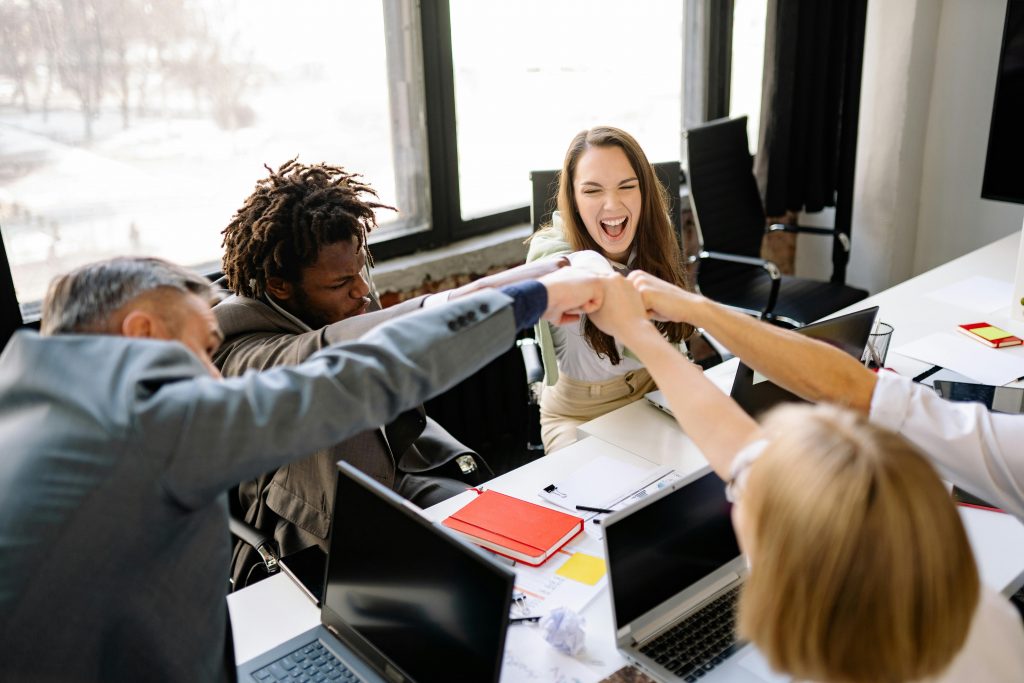Beyond Icebreakers: Designing Team Building That Anchors Change
Team building is often reduced to activities that are fun but fleeting. A quiz night, a treasure hunt, a game of trust falls. Everyone laughs, bonds a little, and then returns to work the next day much the same as before. These experiences can help people get along. But if the aim is to truly strengthen how a team works together, something more substantial is needed.
That something is team development training.
It may not sound as catchy as raft-building or murder mystery dinners, but when thoughtfully designed, team development training lays the foundations for lasting cultural and behavioural change. It’s about going beyond icebreakers and crafting experiences that shift how teams think, relate, and operate, long after the day itself is over.
The Trouble With Traditional Team Building
Let’s be honest. Many team building activities focus on momentary enjoyment rather than meaningful development. They can energise a group temporarily, but often fail to address underlying dynamics such as unclear roles, patchy communication, lack of trust, or reluctance to speak openly.
It’s not that these activities are bad, they’re just incomplete. The fun wears off, and the same tensions resurface. When there’s no follow-through or connection to the everyday realities of work, the value of the experience fades.
What’s missing is a link between the activity and the behaviours it’s meant to change. That’s where team development training comes in, turning a one-off moment into a step within a much bigger journey.
What Makes Team Development Training Different
Team development training goes deeper than surface-level bonding. It works with the beliefs, habits, and systems that shape how people work together. It’s intentional, reflective, and it’s designed to support real-world collaboration, not just camaraderie in a different setting.
A good provider of team development training won’t just entertain. They’ll be curious. They’ll ask: What’s going on in this team? Where do they feel stuck? What are they not saying?
The best training experiences are co-created with the team in mind. They create safe conditions for people to reflect honestly, speak openly, and try new ways of relating. And crucially, they build in time and space for what happens after the session, because that’s when the real change begins.
How Change Really Happens in Teams
Change doesn’t happen in a single moment. It happens in repetition, in reflection, in small shifts over time. A single day can be powerful, but it needs scaffolding, ways to revisit what was learned and embed it into everyday working life.
Team development training can include:
- Space to explore the team’s current state — what’s working and what’s not.
- Activities that surface behaviours and patterns, not just preferences.
- Opportunities for individuals to reflect on their own contributions.
- Structured conversations that would otherwise feel too risky.
- Tools and practices that teams can carry forward into their regular routines.
When a team experiences this kind of training, what often emerges is a deeper understanding of each other. People feel safer to challenge, more motivated to collaborate, and better equipped to support one another. That’s not something a single game of charades will deliver.
Designing With Purpose, Not Just Novelty
There’s no shortage of quirky team building ideas. But novelty alone doesn’t create change. Purpose does. The question isn’t “what’s the most unusual activity we can do?” but “what do we want this team to feel, learn or shift?”
For instance, if a team struggles with decision-making, an activity that puts them under pressure to agree quickly can be revealing. If trust is low, an exercise that invites vulnerability (with clear safety) can start to shift things. The key is to match the design to the need and to build in the space to talk about what happened, why it mattered, and how to use that insight going forward.
This reflective loop is where transformation lives. And it’s where team development training becomes not just another away day, but a catalyst for better ways of working.
Team Development as an Ongoing Practice
Teams, like individuals, are constantly evolving. They form, shift, stretch and sometimes strain. That’s why team development isn’t a one-off fix but instead it’s a continuous process of tuning in, adapting, and growing together.
Some organisations treat team development as part of their rhythm. They check in regularly on how the team is working, not just what it’s producing. They create space for difficult conversations, celebrate progress, and support people to show up fully.
This doesn’t mean constant workshops or endless away days. It means being intentional about how a team reflects, learns, and supports itself over time. When team building is placed inside that bigger picture, it becomes more than a morale boost, it becomes part of the culture.
Choosing the Right Support
If you’re considering team development training, look for providers who prioritise discovery and reflection over off-the-shelf activities. Experts who start with curiosity, not assumptions, are far more likely to design something that meets your team where they are, and helps them grow from there.
They should be willing to explore not just what the team needs to do differently, but how they need to think and feel to work differently. And they should support the team to keep practising, reflecting, and evolving, not just have a good time on the day.
Team building doesn’t need to be loud, wild, or offbeat to be effective. What it needs is purpose, psychological safety, and space to grow. Done well, it can shift the way a team listens, leads and learns together.
That’s the difference between a fun day out and a foundation for change.
If you’re ready to go beyond the icebreakers, consider partnering with an experienced team development training providerwho understands how to support real, lasting change. A provider who focuses on the full picture: not just the event, but the environment, the relationships, and the practices that support better teamwork every day.






